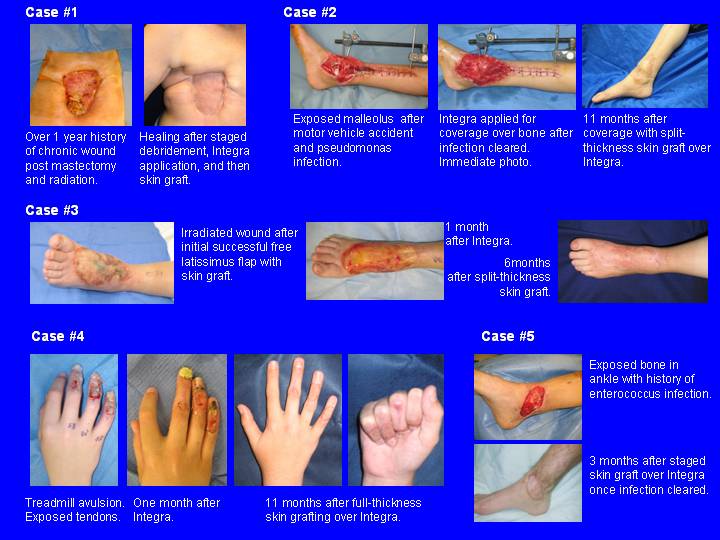Sunday, October 28, 2007
12839
The Use of Artificial Dermis For Complex Wounds
Integra, initially developed for primary coverage of acute burns, act as a network for dermal replacement. An overlying epidermal graft is required 3 to 4 weeks later to complete the full-thickness skin repair. This technology has been applied to non-burn cases for treatment of complicated wounds, as with chronic wounds, exposed bone and tendons, and post radiation. We present a series of 38 patients who underwent Integra reconstruction of non-burn wounds. Average age was 38.7 years and mean wound size 43.9 sq cm. Distribution was upper extremity 17, lower extremity 22, head/neck 3, and trunk 1. Causes were trauma 21, infection 6, tumor ablation 1, radiation 2, venous stasis 1, chemical 1, sepsis 1, and others 5. Average follow-up period was 8.9 months in 36 patients. 35 of 36 patients completely healed. One patient required Integra regrafting once infection of the tibia cleared. Two wounds were allowed to epithelialize without skin grafting. After subsequent skin grafting, only 5 patients required greater than 1 month for complete healing. In many cases, distal extremity wounds with exposed bone and tendon can be reconstructed, obviating the need for microvascular flaps. For chronic wounds, after excision, Integra provides a new matrix for dermal replacement.
View Synopsis (.doc format, 890.0 kb)

